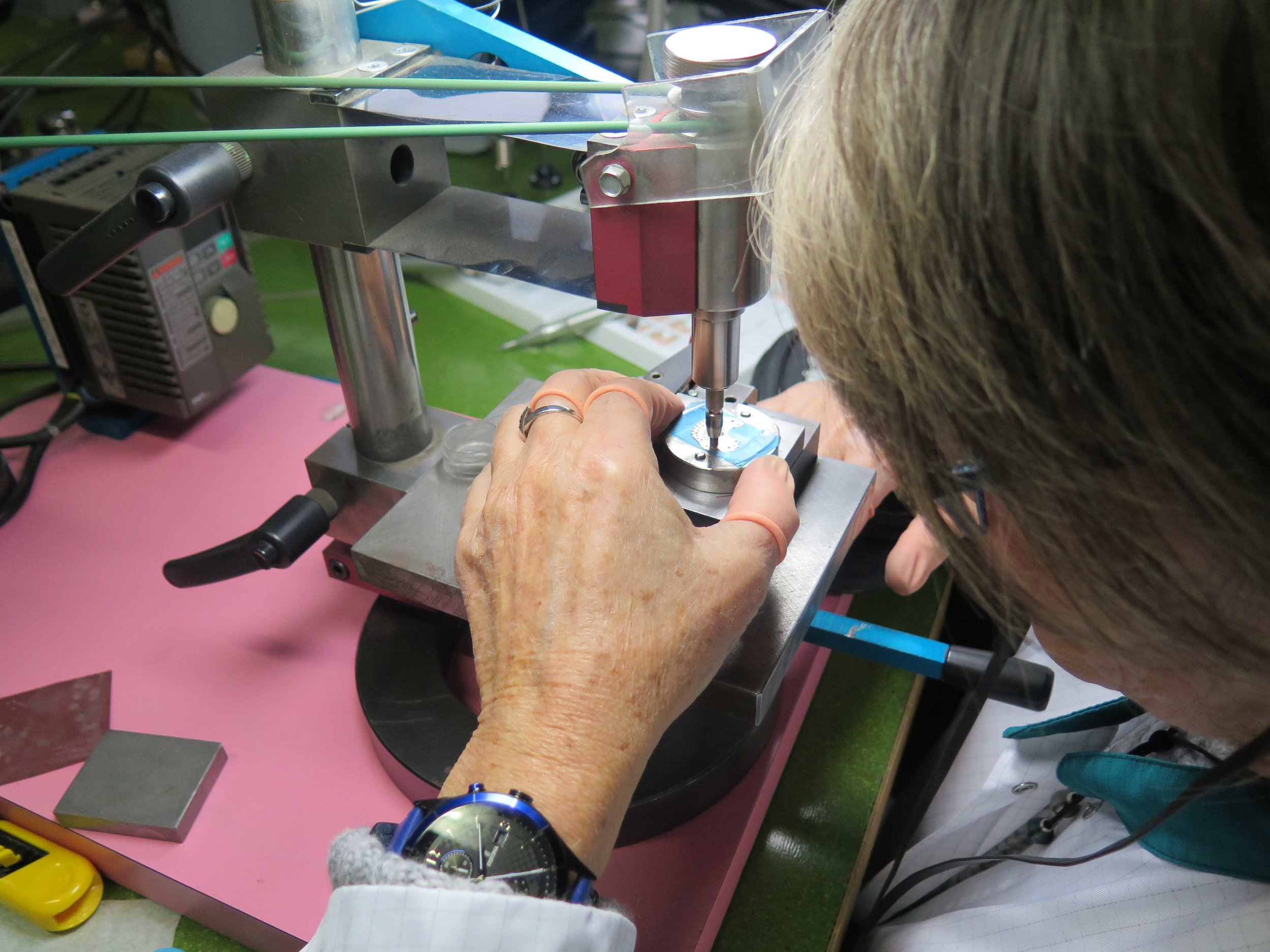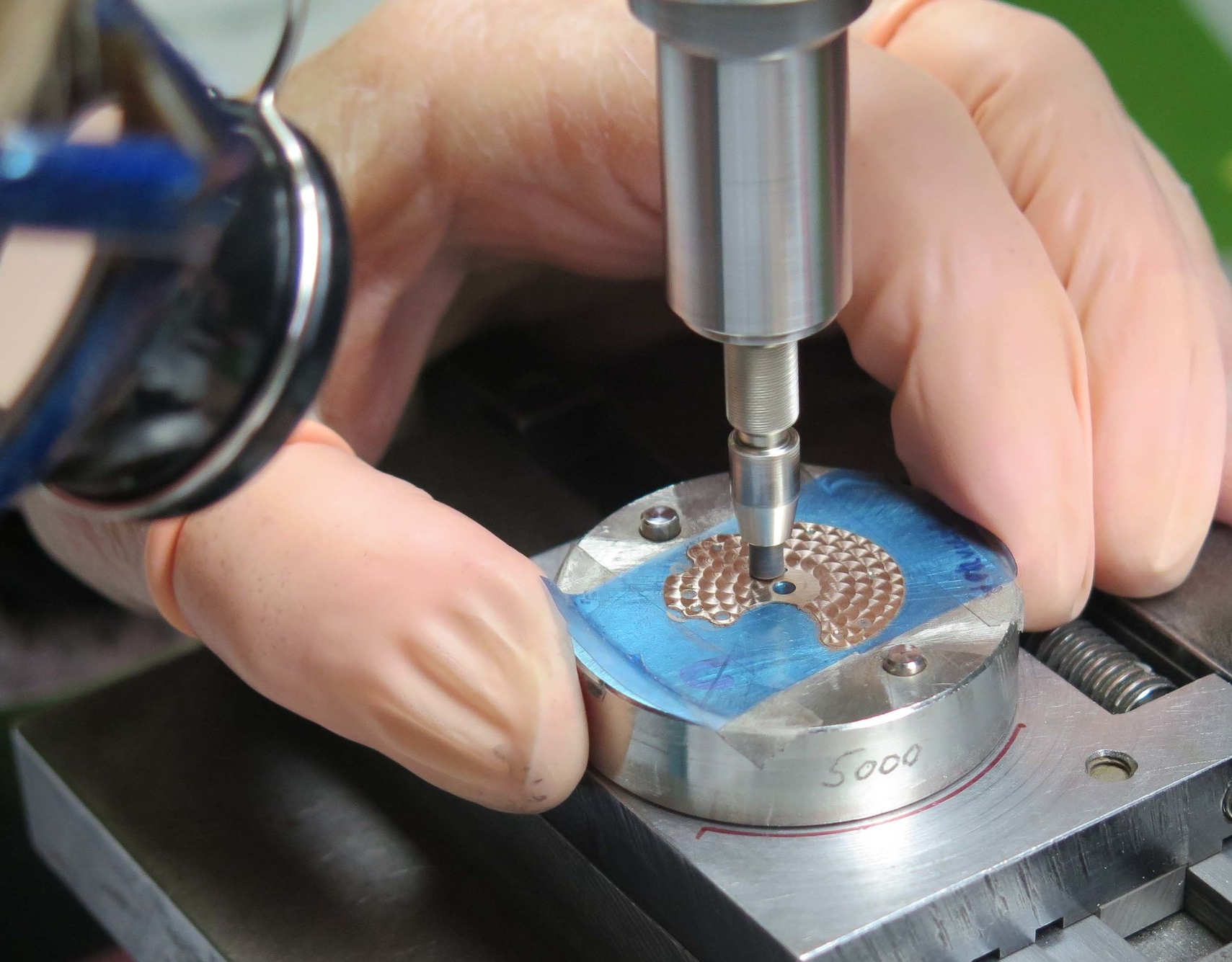Hand decoration of components includes angling, manually spotting (pearlage), straight graining, satining, polishing etc. Below are examples of some types of finishing, different people and companies execute decoration in different ways. Even within a single workshop each individual may have a different technique to achieve the final goal.
Polishing angles. The bridge is fixed onto a specially made jig of the same form which allows them to be held solidly in place as the angles are polished by the rotating wooden discs which in turn are dressed with polishing compounds.
With bridges which are complex in form and can not be angled as above using discs, different techniques are used such as micro-polishing motors and polishing papers.
The tool below allows the bridge to be easily and safely held.
The time taken to polish the angles by hand is considerable and is often executed by repeatedly polishing the angles using different grades of paper from course to fine. The green ski-ramp makes the work more comfortable for the angler and the tool holding the bridge then rests against the end of the ski-ramp whilst it is polished using a microscope to follow the process.
Manually spotting a plate. The plate to be decorated is secured onto a rotating jig. The operator turns the jig after each graining action of the tool.
Straight graining a small spring manually using 3N abrasive paper on a flat marble base.
Straight graining small components in series
The small faceted levers are placed onto the steel blocked to the right and located in place between the two pins. The central hole between the two pins is linked to a vacuum tube which holds the lever in place whilst it is being grained.
The underside of the tool showing the abrasive paper. For the tool to work the jig needs to be complete with 10 levers.
Dressing the sides of a bridge.




























